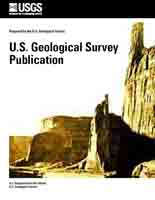
Landsat Next
Links
- The Publications Warehouse does not have links to digital versions of this publication at this time
- Download citation as: RIS | Dublin Core
This product is temporarily unavailable.
Table of Contents
| Publication type | Report |
|---|---|
| Publication Subtype | USGS Numbered Series |
| Title | Landsat Next |
| Series title | Fact Sheet |
| Series number | 2024-3005 |
| DOI | 10.3133/fs20243005 |
| Edition | Version 1.0: March 11, 2024; Version 1.1: March 25, 2024 |
| Publication Date | March 11, 2024 |
| Year Published | 2024 |
| Language | English |
| Publisher | U.S. Geological Survey |
| Publisher location | Reston, VA |
| Contributing office(s) | Earth Resources Observation and Science (EROS) Center |
| Description | 2 p. |
| Online Only (Y/N) | N |
| Additional Online Files (Y/N) | N |

